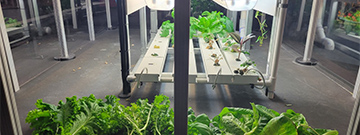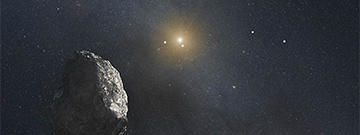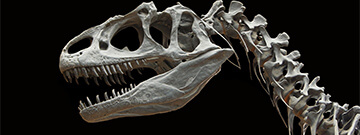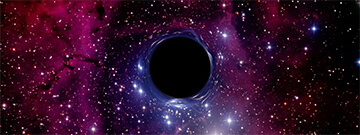
Demystifying Space
Outer space is a mysterious, yet interesting, part of science. We’re constantly seeing new advancements in the world of aerospace and aeronautics, but so much of space is unknown. Here we have some of the most common questions surrounding space and our universe.
What is the “Great Red Spot”?
In March of 1979, the spacecrafts Voyager I and II sent pictures of Jupiter back to Earth, and many noticed a distinct red spot on Jupiter’s exterior. This is actually a swirling hurricane, first observed in 1831, and its size was once recorded to be three times larger than Earth! The color of the spot varies from bright red to pink, depending on the amounts of red phosphorus. The storm has been ongoing since as long as we’ve known, however it has been shrinking for around 150 years.
Why are there still footprints on the Moon?
In 1969, astronauts Neil Armstrong and Buzz Aldrin became the first to step on the surface of the moon with the Apollo 11 mission. Today, more than 50 years later, we can still see these triumphant first steps on the face of the moon. This is because the moon lacks an atmosphere, and so there’s no wind or weather to blow away the imprints of the footprints. These prints will stay for quite a while, until they are eventually eroded in millions of years thanks to the moon’s exposure to tiny meteorites. Until then, we are given a constant reminder of this feat of science and technology.
What really are black holes?
A black hole is a place in space with such strong gravity that no light at all can escape. Not even a single ray of light can pass. So, if black holes are black, how do we know they exist? Well, we can observe the presence of a black hole by watching the behavior of nearby stars. If a black hole is in close orbit of a star, gases that are emitted by the star are sucked into the black hole. These gases get squeezed and heated, and gamma rays (a form of energy) are emitted. Scientists can detect these rays to see where there might be a black hole.
Sources:
Dunbar, Brian. “What Is a Black Hole?” NASA, NASA, 21 May 2015, https://www.nasa.gov/audience/forstudents/k-4/stories/nasa-knows/what-is-a-black-hole-k4.html ![]() .
.
Dunbar, Brian. “Apollo 11 — First Footprint on the Moon.” NASA, NASA, https://www.nasa.gov/audience/forstudents/k-4/home/F_Apollo_11.html ![]() .
.
Miller, Katrina. “Jupiter’s Great Red Spot Is Surprisingly Deep.” Scientific American, Scientific American, 28 Oct. 2021, https://www.scientificamerican.com/article/jupiters-great-red-spot-is-surprisingly-deep/ ![]() .
.
Scientific Peer Review by Alysia Mandato
Aneri Shethji:
Aneri Shethji is a 10th grader at North Allegheny Intermediate High School. She is very passionate about science and writing and enjoys getting involved with the community. In her free time, Aneri spends time with friends and family and loves getting outside. She can’t wait to learn more about all that science has to offer, and help others learn it too!

On April 8, 2024, we will witness a mesmerizing event. A total solar eclipse is upon us, and here at the Science Center, we can explore this celestial phenomenon in many ways.
But first, what is this event? A ...

Climate change is a big deal. We’ve all seen news stories about greenhouse gas emissions, rising temperatures, and the hole in our ozone layer. However, what tends to sometimes be overlooked is climate change’s ...

In the captivating world of health care, a fascinating transformation is taking place—a rise in Artificial Intelligence, or AI! Picture a world where smart machines team up with doctors to revolutionize medicine, making ...

Hydroponics, a contemporary farming method, redefines how we grow plants, offering a fresh approach to cultivating crops that differs from traditional soil-based farming. This innovative technique doesn’t rely on soil ...

In our solar system, the eight planets—Mercury, Venus, Earth, Mars, Jupiter, Saturn, Uranus, and Neptune—are talked about more than anything. While the ...

Quantum computers are on the forefront of technological advancement. These machines, unlike any traditional computers you’re familiar with, harness the ...

The Earth is a spectacle of constant movement. Periodically, it commands our attention with displays of power—earthquakes. These events are tied to the intricate movements of the Earth's tectonic plates. Tectonic ...

Have you ever wondered how investigators in crime shows manage to identify suspects with such accuracy? Dusting for fingerprints isn’t always feasible in many cases, so the true answer lies in a different type of ...

Writers: Evan Allen, Ricardo Aguilar, Jillian Pensenstadler, Amelia Foley, and Ian Lisien
Once a center of industrial prowess, Pittsburgh has undergone a remarkable transformation, ...

Have you ever questioned what happens to the food you consume? Prepare yourself for a thrilling voyage as we go through your digestive system! We'll look at ...

When someone falls on their arm, they immediately head to the hospital to see if it is hurt. X-rays are used by doctors to examine your bones more ...

Even though dinosaurs became extinct about 65 million years ago, we know quite a bit about them, including what they ate, where they lived, and even what ...



